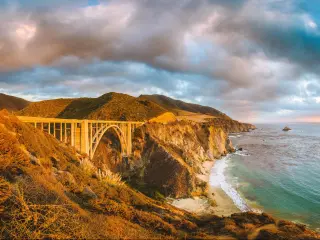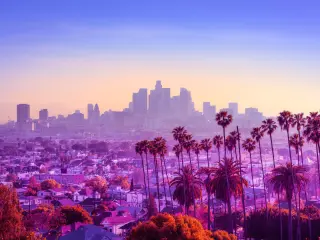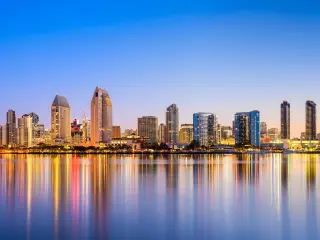The Perfect Los Angeles to Yosemite Road Trip
With its towering sequoia trees and majestic cascading waterfalls, Yosemite National Park is a classic road trip from Los Angeles. See iconic wonders such as El Capitan, Bridalveil Fall, Half Dome and drink in the glorious views from Glacier Point at the end of this great adventure!
You can do the 360-mile road trip from Los Angeles to Yosemite National Park in 6 hours. On the way, you can choose to stop at Santa Clarita, Bakersfield, Fresno, Mammoth Lakes and Inyo National Forest, as well as Kings Canyon and Sequoia National Parks.
Top off your trip with a stop at beautiful Mammoth Lakes for a perfect vacation, whatever the time of year. Read on for our tips on the best route to take, the pros and cons of one route over another, where to stay, the best time of year to travel and our favorite things to see along the way.
Where is Yosemite National Park and how far is a road trip from Los Angeles?
This relaxed and beautiful road trip is located in California, taking you from the ”City of Angels” near the coast in SoCal to Yosemite National Park, which sits around 150 miles inland.
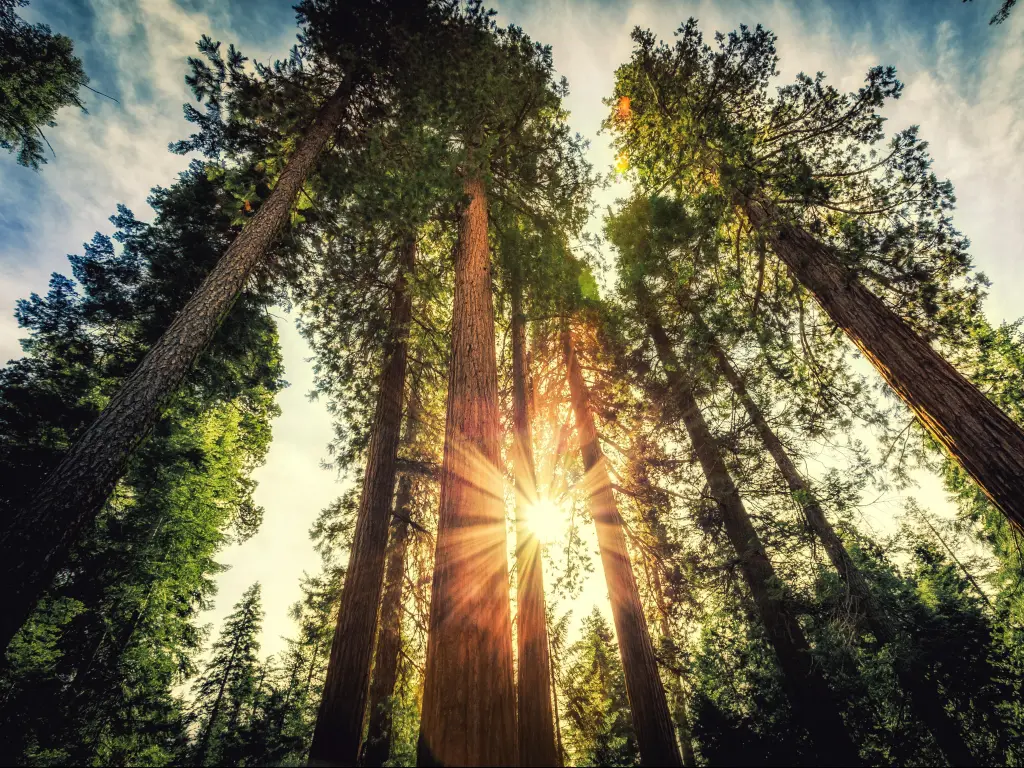
This road trip can also include a visit to Mammoth Lakes, a truly stunning spot in the Sierra Nevada mountains and a great base to explore the Rainbow Falls, Yosemite, as well as the Mammoth and June Mountain ski areas. This will be of particular interest to winter sports fans, but trust us: Mammoth Lakes is gorgeous in the summertime, too.
Our routes from LA to Yosemite range from 310 miles to 360 miles in length and should take around 6 hours to drive.
How long is the road trip from Los Angeles to Yosemite National Park, and how many days will it take?
| Route | Distance | Driving Time | Recommended Days |
|---|---|---|---|
| The Bakersfield Route | 310 miles | 5 hours 50 minutes | 2 Days |
| The Mammoth Lakes Route | 360 miles | 6 hours 30 minutes | 2-3 Days |
A road trip from Los Angeles to Yosemite will take you between 5 hours 50 minutes and 6 hours 30 minutes, covering a distance of 310 or 360 miles, depending on which route you take.
You should allow at least 2 or 3 days for this road trip, to make sure you get time to relax and enjoy your beautiful surroundings en route. We'd recommend taking 3 days for the Mammoth Lakes route to Yosemite if you have the time.
You'll also want to make sure you dedicate plenty of time to explore your destination, Yosemite National Park. The joint-second oldest National Park in the United States (after Sequoia), Yosemite is loved for its towering waterfalls, tall sequoia trees and some of the most incredible views you'll ever see.

Yosemite is home to a dazzling array of wildlife, including over 260 species of bird. Hikers will be in their element, while those looking for a more relaxing pace can find plenty of places to stop and simply enjoy the stunning scenery.
It's also worth noting that there are multiple driving routes through Yosemite National Park, accessible depending on the seasons and weather conditions.
What is the best road trip route from Los Angeles to Yosemite National Park?
There is no best route for a road trip to Yosemite from Los Angeles - just the best route for you.
That being said, this is how our two routes stack up against each other, looking at some factors that might influence your decision.
| The Bakersfield Route | The Mammoth Lakes Route | |
|---|---|---|
| Easy Driving | ⭐️⭐️⭐️⭐️⭐️ | ⭐️⭐️⭐️⭐️⭐️ |
| Scenery | ⭐️⭐️⭐️ | ⭐️⭐️⭐️⭐️⭐️ |
| Facilities | ⭐️⭐️⭐️⭐️⭐️ | ⭐️⭐️⭐️⭐️ |
| Things to do | ⭐️⭐️⭐️⭐️⭐️ | ⭐️⭐️⭐️⭐️ |
| Traffic Flow | ⭐️⭐️⭐️ | ⭐️⭐️⭐️⭐️ |
Driving from Los Angeles to Yosemite via Bakersfield
The Bakersfield Route from Los Angeles to Yosemite is the shorter of our two routes, meaning you'll take less time to reach the National Park, while still enjoying some fabulous views on the way.
This route follows some state highways that are well maintained. However, there are a few road changes (not driving solely on a main highway).
This route passes through urban hubs such as Santa Clarita, Bakersfield and Fresno, which means that there's less natural scenery to be enjoyed on this route.
There are quite a few major cities on this route as well as petrol stations, so refueling your car - and yourselves - shouldn't be an issue.
When it comes to entertainment along the way, you'll find plenty of attractions in Bakersfield and Fresno and can choose to make detours to enjoy more outdoorsy activities if you'd prefer. Our recommended detours are Isabella Lake, Sequoia National Forest and the spectacular Kings Canyon National Park.
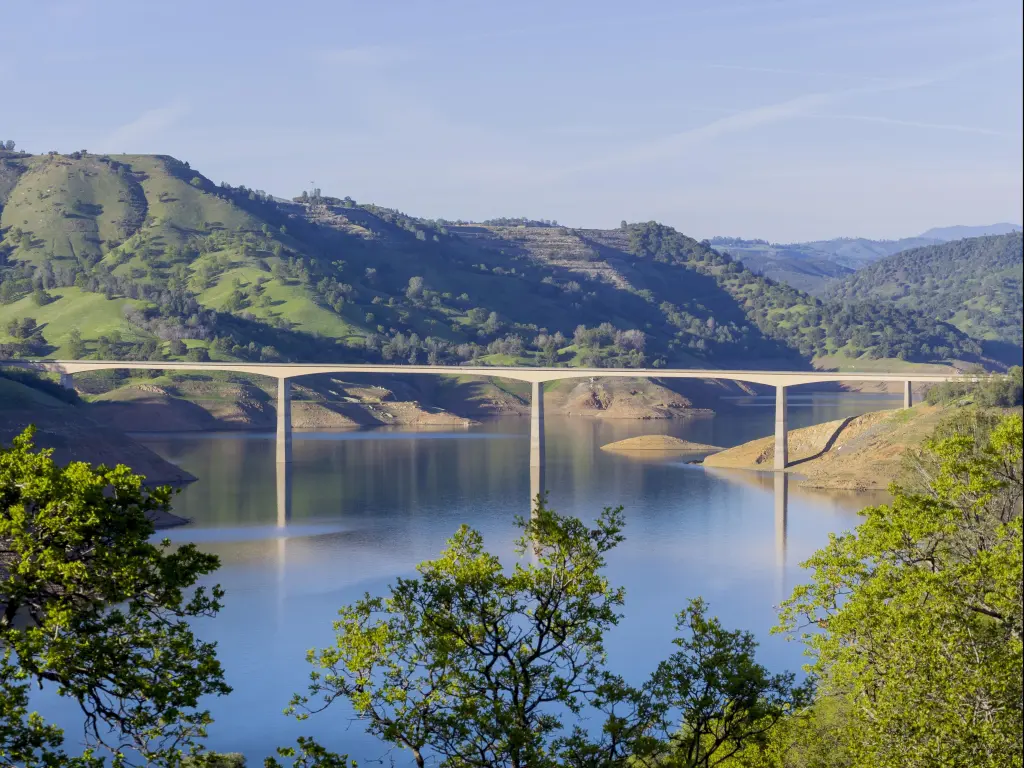
As mentioned above, this route follows some state highways which don't have as many lanes as an interstate road, and this might slow down the traffic flow, especially near big cities and if there is maintenance.
If you decide to take this route without taking any detours, it won't be as scenic as the Mammoth Lake alternative.
That being said, the Bakersfield Route gives you the best of both worlds: a shorter and more direct route for those pressed for time, with opportunities for detours if you fancy a scenic escape.
Driving from Los Angeles to Yosemite via Mammoth Lakes
This is a very straightforward drive that takes place on a single national highway. It is scenic and passes by Death Valley National Park, which is an awesome place to visit. You don't have to switch from one road to another, so it is a very easy drive.
While this is a simple route, it passes through some amazing locations, including Santa Clarita, Death Valley, Kings Canyon National Park, Inyo National Forest and Mammoth Lakes, before you reach Yosemite.
On balance, this route is more scenic than our other option, with Death Valley National Park on one side and the views of California's beautiful national forests on the other.
This route presents more outdoor options (such as Death Valley) than the first option but does not have the urban hubs en route, which does mean that you'll compromise slightly when it comes to facilities, restaurants and indoor attractions.
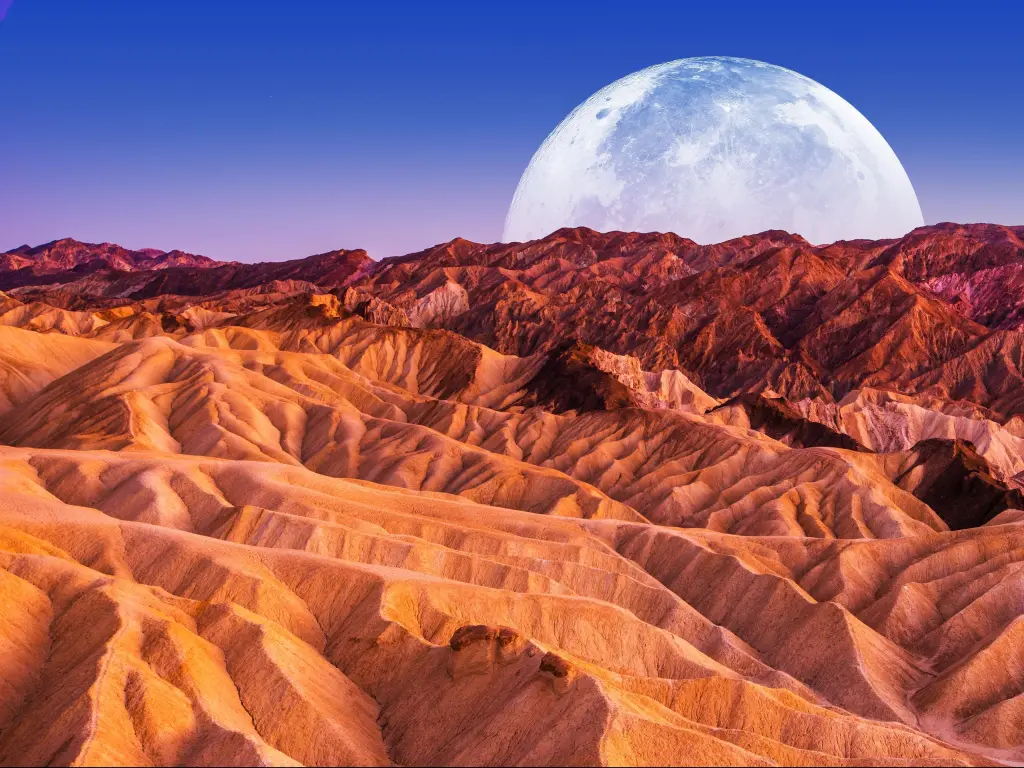
The drive takes place on a national highway, and there aren't major cities on the way. This means that you shouldn't encounter congestion unless there are road works.
There aren't any petrol stations on this route until you approach Mammoth Lakes, so make sure to start the trip with a full tank.
One thing to keep in mind is that Mariposa Grove and Tioga Pass tend to be closed in the winter because of snow. If you're traveling this time of year, it's best to drive through Fish Camp via the Bakersfield Route.
Driving Route from Los Angeles to Yosemite National Park
Once you've decided on the best route option for you, it's time to get down to the details!
Read on for a flavor of the routes you could take from LA to Yosemite. With these high-level directions in your back pocket, be sure to always check GPS and local weather and traffic conditions before you set out on your trip.
Driving the Bakersfield Route
Leave Los Angeles via US Highway 101, heading north towards Santa Clarita. Soon, you'll merge onto Highway 170 and then Interstate 5 (I-5), continuing on this road all the way to Bakersfield.
From Bakersfield, take CA-99 north through McFarland, Tipton and then Fresno, where you might want to break the journey up before heading out of the urban area.
Once you've finished in Fresno, take CA-41 towards Oakhurst. Helpfully, this part of CA-41 is called Yosemite Freeway, so you'll know you're heading in the right direction!
The drive from Fresno to the South Entrance Gate to Yosemite is around 1 hour 20 minutes, on CA-41, passing by Fish Camp (and its accommodation options) before you enter the park.
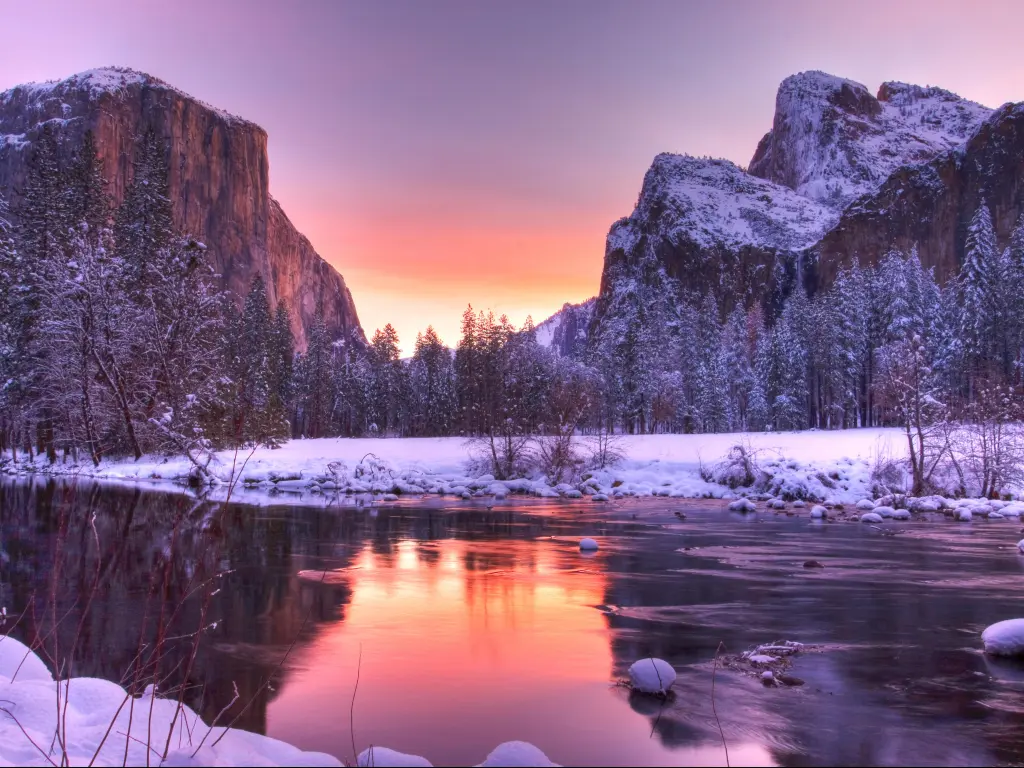
Driving the Mammoth Lakes Route
As with the Bakersfield Route, you'll begin on Highway 110 and then CA-170, joining I-5 near Sheldon Arleta Park.
The two routes diverge at Santa Clarita, however, with the Mammoth Lakes Route following CA-14 eastwards in the direction of Lancaster.
Around 1 hour 15 minutes from Lancaster (near Inyokern) you'll merge onto Highway 395, which takes you all the way to Mammoth Lakes.
Around 160 miles after joining Highway 395 you'll pass Mammoth Yosemite Airport: a sure sign that you're approaching your destination.
Continue from here to Lee Vining (unless you're stopping in Mammoth Lakes for some R&R), joining Tioga Road - just to your left - as you approach Mono Lake.

Tioga Road is a stunning drive westwards through Yosemite, past Ellery, Tioga and Tenaya Lakes. You'll find the East Entrance to Yosemite around 15 minutes' drive from the Tioga Road junction at Mono Lake.
This route is a beautiful one to take through Yosemite. Please be aware, however, that Tioga Pass and Tioga Road close down winter due to adverse weather conditions.
Where to stop overnight on a road trip between Los Angeles and Yosemite National Park
While you could technically complete this trip from Los Angeles to Yosemite in a day, you'd miss out on so much natural beauty - as well as a more relaxed pace!
We've chosen our favorite overnight stops to help you plan an easygoing trip with a little relaxation and luxury thrown in!
Enjoy the Bakersfield Sound
Known fondly as “Nashville West”, Bakersfield, California is famous for its musical heritage and rich cultural scene.
At just two hours into your journey, you might wonder why we've chosen Bakersfield as your overnight stopping point on its namesake route.
As any local will tell you, traffic around Los Angeles is heavy at the best of times, and it's therefore likely that you'll be ready for a breather once you have made your way out of its huge urban sprawl.
Bakersfield is also a great place in its own right to enjoy an evening. With Fox Theater and Buck Owens' Crystal Palace providing top-class live acts, you won't be short on options for entertainment.

While in town, we suggest you stay at the stylish, Art Deco masterpiece that is Padre Hotel. This Bakersfield classic features unique yet modern décor, fabulous food and a downtown location that means you can ditch your car and take a break from driving.
Be sure to check out the Kern County Museum before you resume your journey to Yosemite, with its wealth of artifacts documenting local life and the history of the region.
Get back to nature at Mammoth Lakes
At under an hour from Yosemite's East Gate, Mammoth Lakes is much further into the route than our Bakersfield stopover. Despite this, we can't help but recommend it as a place to pause and recharge before your National Park adventure.
Loved by winter sports fans and hikers alike, Mammoth Lakes occupies a wonderful location in the Sierra Nevada mountains, providing a great base to explore the Rainbow Falls and the Mammoth and June Mountain ski areas.
Located in Inyo National Forest, it also attracts hikers in summer, particularly to Devils Postpile, to see unique column-shaped rocks.

While you're in Mammoth Lakes, we recommend The Village Lodge for your accommodation. From here, you can take a 1-minute gondola ride straight to Mammoth Mountain, or you can just hang out at the resort and enjoy the magical view.
Each of the hotel's beautiful condos also features a fireplace and dining area: perfect for a cosy night in after some fun in the mountains!
Our favorite place to stay near Yosemite National Park
Whichever direction you approach Yosemite from, there is plenty to enjoy at your destination. Drive through the Dead Giant Tunnel, take some snaps from Yosemite Valley Vista Point, or take a hike on one of its countless trails.
When it comes to a good night's rest, we recommend the Evergreen Lodge at Yosemite. Its location is unbeatable and we just love the cozy charm and camping-style atmosphere.
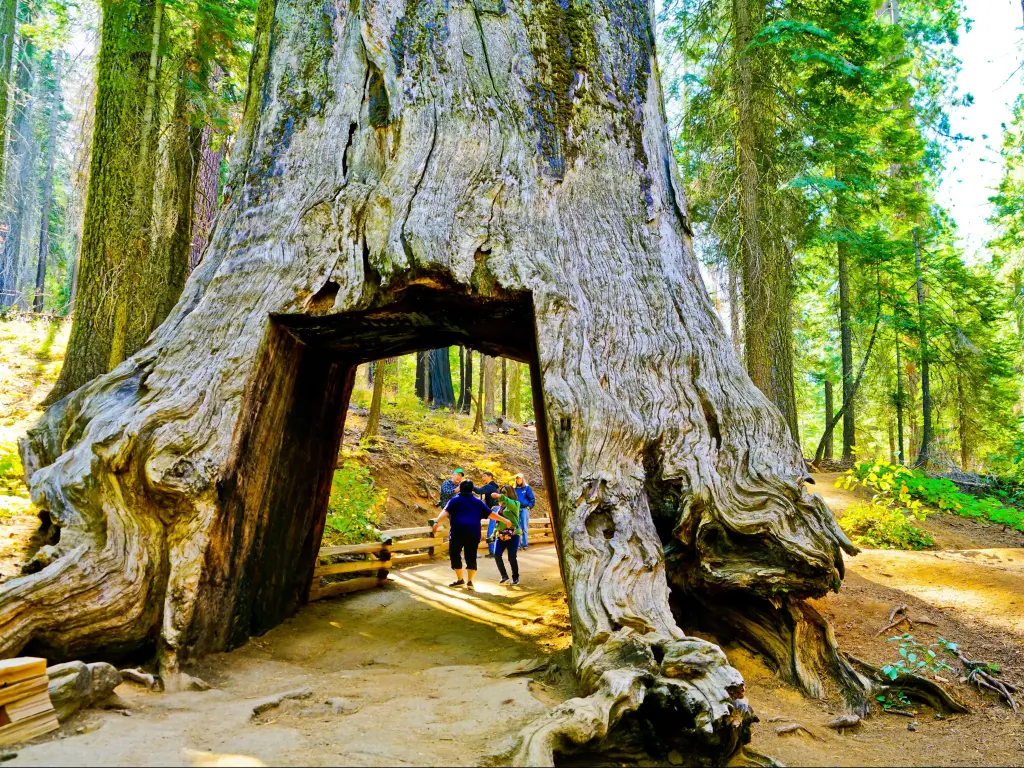
This property also comes with the added bonus of great amenities such as a seasonal outdoor pool, a restaurant (that guests rave about) and a cozy bar on-site. On top of all that, there is even a hot tub for the ultimate in relaxation after a day spent on the trails!
And for those who still have energy after all that hiking, there are also opportunities to play tennis or billiards at the resort.
Best time to travel from Los Angeles to Yosemite National Park on a road trip
Thanks to California's beautiful climate, you can take a trip from Los Angeles to Yosemite at any time of year.
You will find marked differences in driving conditions, prices and the activities on offer depending on when you travel though, so be sure to read on for our top tips.
Traveling to Yosemite from Los Angeles in summer
Hot days with highs reaching 78-80 degrees Fahrenheit mean that some will find Yosemite uncomfortable during summer. Nights are cool but daily temperatures can reach 100 degrees Fahrenheit in July.
July and August, both Yosemite and Mammoth Lakes are chock full of visitors. This invariably means a greater likelihood of encountering traffic and higher hotel prices too.
If you can brave the crowds, however, you'll be rewarded with Gold Rush BBQ (from the end of May to September) which may sway your vote!
Traveling to Yosemite from Los Angeles in winter
Temperatures are relatively mild in California, with temperatures ranging between 50-60 degrees Fahrenheit in the region.
More of an issue, however, is road closures especially on the Mammoth Lakes Route. Many trails are also closed in Yosemite due to snow and other inclement weather.
You can still visit some parts of the park - and the Sequoias in the snow will be magical - but please be aware that you won't be able to see all the attractions the park has to offer.
Winter will see some road closures, which will mean that you will encounter fewer crowds and lower accommodation prices. This does not apply to the holiday period, when Yosemite sees bigger crowds.

Traveling to Yosemite from Los Angeles in the shoulder seasons
Spring sees temperatures of about 70-75 degrees Fahrenheit on both routes to Yosemite. Nature will be coming back to life with beautiful blossoms everywhere - but be aware that Memorial Day in May brings crowds.
Fall tends to average around 65-70 degrees Fahrenheit. However, keep in mind that snow will often cover Yosemite as early as October, so stay away if you want a guarantee that you'll stay warm and dry.
Fall from September onwards gets crisp as well at Yosemite National Park, but on the other hand, you will get to enjoy seeing the park in its full fall colors.
The park is far less crowded in fall, so you will get better prices and the perk of all roads being open. And as a bonus, you can catch the Mariposa County Fair in September.
The best things to see and do on a road trip from Los Angeles to Yosemite National Park
This road trip is blessed with plenty of options when it comes to things to see and do en route.
You might want to save your energy for all the hiking you'll do at your destination - but in case you fancy some entertainment on your journey, we've set out some ideas below.
On the Bakersfield Route
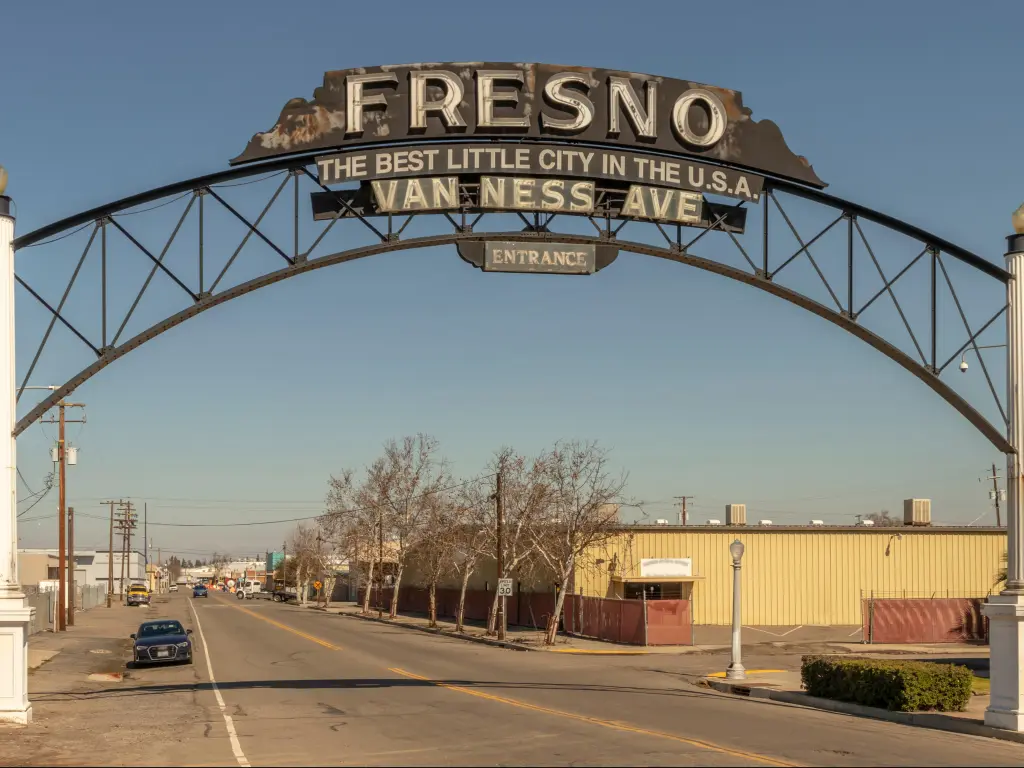
Santa Clarita: A veritable hub of Californian historical sites, including Pico Number 4, the longest running oil well in the world and Mentryville, California's Pioneer Oil Town.
Castaic Lake State Recreation Area: A fabulous family-friendly destination featuring a lake with boats you can hire, swimming (during the summer season) & fishing. Known to locals as a great spot for camping & hiking.
Bakersfield: A city of culture that's often called "Nashville West", Bakersfield is home to fabulous museums and art galleries, including the Buena Vista Museum of Natural History and the California Living Museum. You'll also find many hiking trails here, winding a number of trails through the mountains of the Kern River Ranger District - part of Sequoia National Forest.
Fresno: Fondly known as "The Best Little City in the USA", Fresno lies at the heart of Californian agriculture country. Highlights here include Fresno Chaffee Zoo (with sea lions and a stingray touch pool) as well as Woodward Park's beautiful Shinzen Japanese Garden.
New Melones Lake: A tranquil reservoir on the Stanislaus River, nestled in the Sierra Nevada foothills. With great hiking and biking trails you won't be short on exciting activities, set in the most beautiful surroundings.
Lake Camanche: A great option if you're looking for somewhere to to pitch your tent. This multi-award winning campground benefits from 54 miles of shoreline and great fishing in a peaceful lakeside setting.
Round Top: A towering and craggy 10,000-foot mountain, poised on the Sierra Crest in Alpine County. Situated just south of the Carson Pass, this is the highest point in the Mokelumne Wilderness and Eldorado National Forest.
On the Mammoth Lakes Route
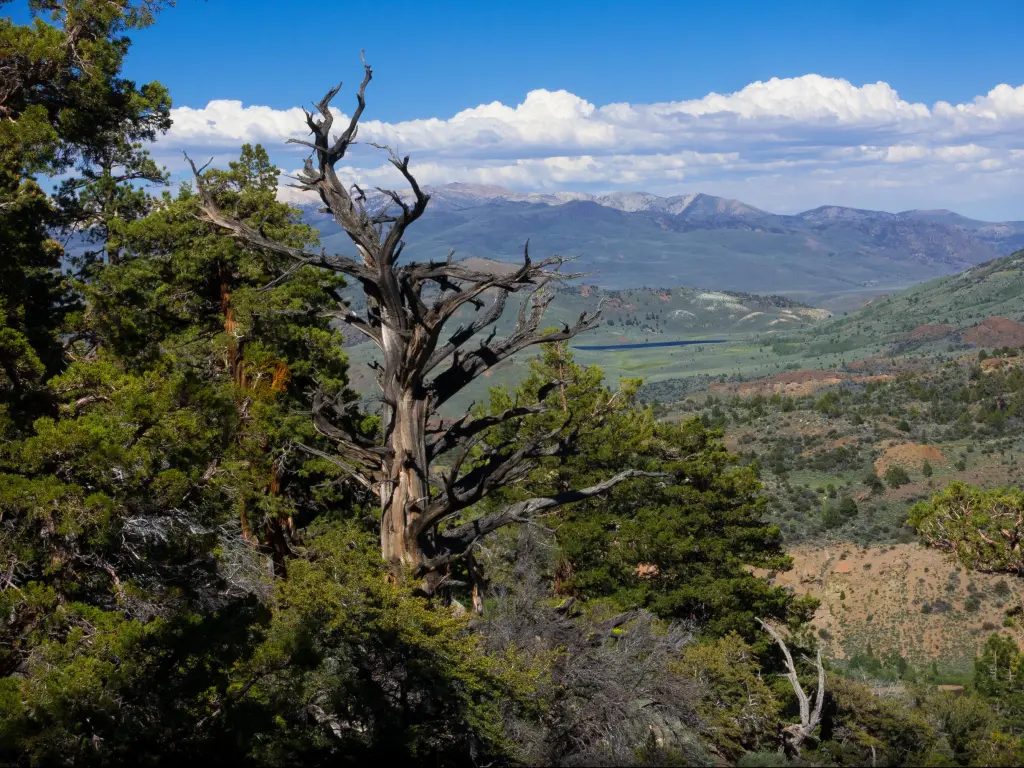
Alpine Village: A cute slice of Bavaria in Southern California, you can get a real taste of Germany in this Alpine Village with great restaurants and stores to explore
Topaz Lake: A picture-perfect reservoir on the Nevada-California border. Bordered by the Eastern Sierra, it is also near Eldorado National Forest and Toiyabe National Forest.
Mt Patterson: A majestic mountain peak standing at over 11,000 feet tall and situated in Mono County. Mt Patterson is the highest mountain in the Sweetwater Mountain range, with amazing views of the region.
Mono Lake: Known for its world-famous tufa towers, Mono Lake is a large salt lake that is home to trillions of brine shrimp and a huge range of bird species. Very close to Yosemite's East Gate.
Inyo National Forest: A beautiful forest with one of the oldest living trees in the world - as well as the Ancient Bristlecone Pine Forest.
Death Valley National Park: Eerie and otherworldly: Death Valley is one of the hottest places in North America. It also has some great resorts if you fancy a memorable stopover.

